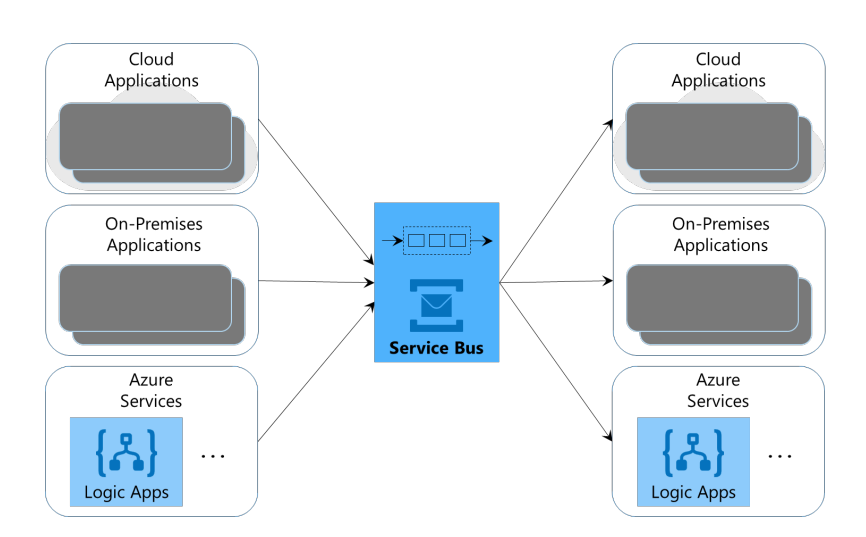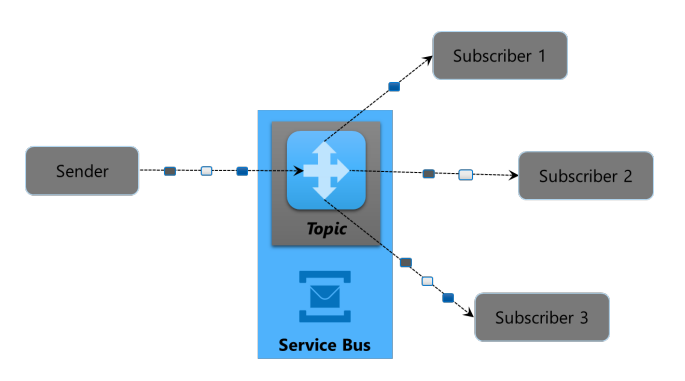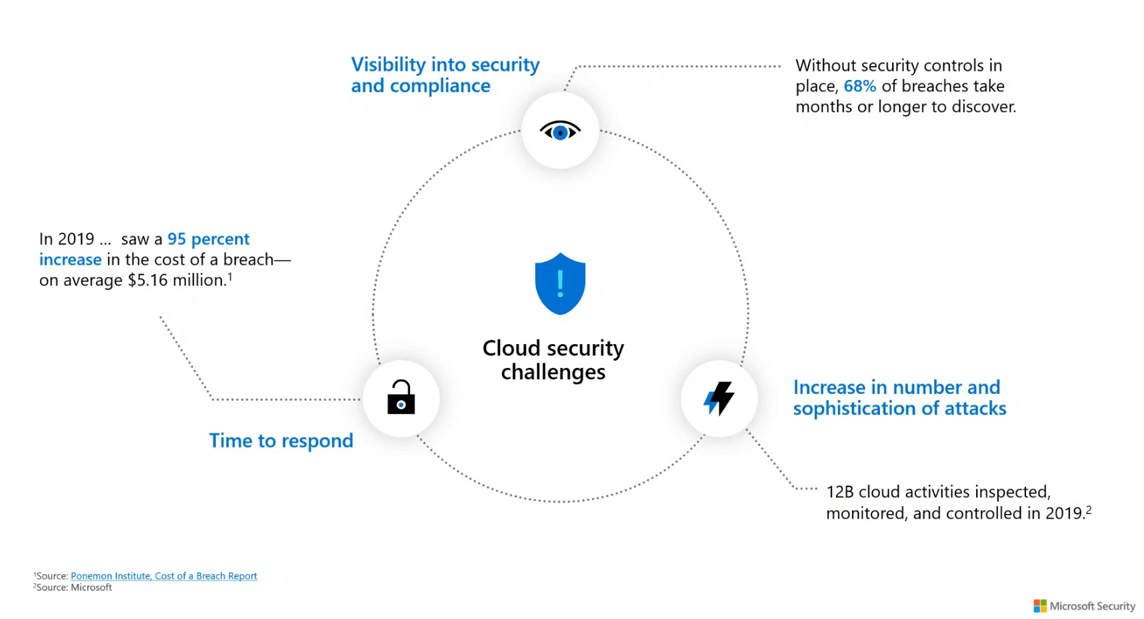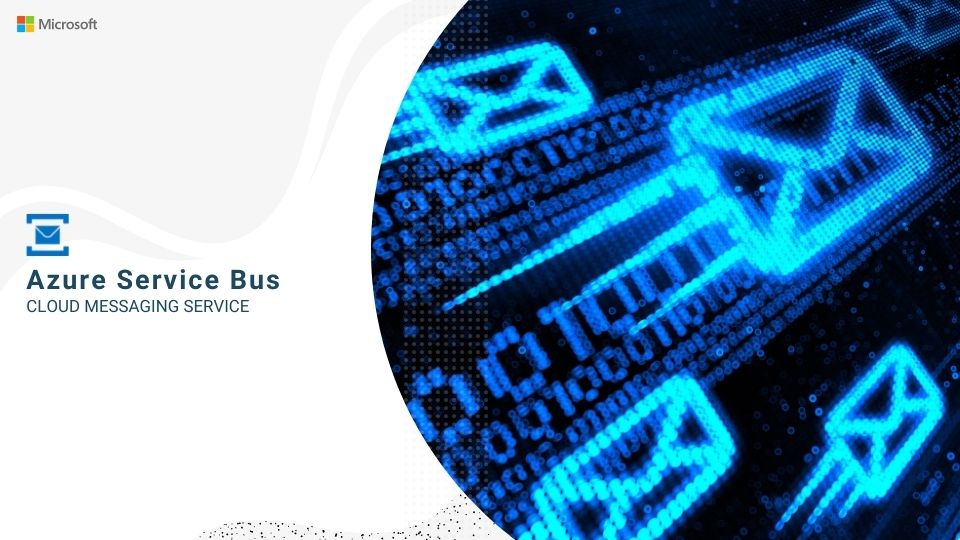Azure Service Bus is a cloud messaging service that connects any cloud-based applications, gadgets, and services to other cloud-based apps and services. As a result, it serves as a messaging backbone for cloud-based and cross-platform applications. In this blog post, we will go through Azure Service Bus Pricing and features in detail.
Azure Service Bus Pricing And Features
Pricing Model Structure of Azure Service Bus
Basic, standard, and premium Service Bus grades are available. Here’s how they stack up:
The standard messaging tier (via the base price) includes 11,000 brokered connections that can be shared through all queues, topics, subscriptions, and event hubs under the linked Azure subscription.
Service Bus premium utilizes dedicated resources to deliver increased throughput and consistency.
| Feature | Basic | Standard | Premium |
| Queues | Available | Available | Available |
| Scheduled messages | Available | Available | Available |
| Topics | Not available | Available | Available |
| Transactions | Not available | Available | Available |
| De-duplication | Not available | Available | Available |
| Sessions | Not available | Available | Available |
| ForwardTo/SendVia | Not available | Available | Available |
| Message Size | 256 KB | 256 KB | 1 MB |
| Resource isolation | Not available | Not available | Available |
| Geo-Disaster Recovery (Geo-DR) | Not available | Not available | Available |
| Java Messaging Service (JMS) 2.0 Support | Not available | Not available | Available |
| Availability Zones (AZ) support | Not available | Not available | Available |
Messaging operations
Any API call to the Service Bus service is considered an operation.
| Basic | |
| Operations | $0.05 per million operations |
| Standard | |
| Base charge 1 | $0.0135/hour |
| First 13M ops/month | Included |
| Next 87M ops (13-100M ops)/month | $0.80 per million operations |
| Next 2,400M ops (100-2500M ops)/month | $0.50 per million operations |
| Over 2,500M ops/month | $0.20 per million operations |
| Premium | |
| Hourly | $0.928/hour |
Brokered connections
The number of AMQP or HTTP connections to Service Bus.
| Standard Tier | |
| First 1K/month | Included |
| Next 99K (1K-100K)/month | $0.03 per connection/month |
| Next 400K (100K-500K)/month | $0.03 per connection/month |
| Over 500K/month | $0.02 per connection/month |
| Premium Tier | |
| Brokered connections are not charged in the premium tier. |
Hybrid connections and Windows Communication Foundation (WCF) relays
Moreover, under Azure Service Bus pricing, Hybrid connections are charged per listener unit as well as any data usage in excess of the monthly allowance of 5 GB. Message volume and relay hours are used to charge WCF relays.
| Hybrid Connection Pricing | |
| Connection charge (includes 5 GB of data/month) | $9.782 per listener |
| Data transfer overage (data exceeding the included 5 GB/month) * | $1/GB |
Monthly fees are based on 730 hours of consumption. One-hour increments will be charged for connections.
| WCF Relay Pricing | |
| Relay hours | $0.10 for every 100 relay hours |
| Messages | $0.01 for every 10,000 messages |
Benefits of Messaging as a Service

Operators benefit from the Interop Messaging as a Service (MaaS) solution because it eliminates the challenges of retaining old SMS/MMS messaging infrastructure while also allowing flawless interaction with RCS as well as other sophisticated IP/IMS services.
Legacy network components are sometimes disregarded until they reach end-of-life as operators strive to transfer their new network to the cloud using technologies like NFV, SDN, and service abstraction. It’s either too late by then or has become a mission-critical replacement program that locks up valuable resources and funds that could be used for a solution.
Due to the large number of interconnected systems that are all too often physically unconnected in their network—primarily gateways, routers, and various OSS/BSS integration points—this legacy replacement can stymie the evolution of fresh ideas, new service releases, and future network management. By unifying their entire antiquated “black box” infrastructure into a unified controlled solution, operators can alleviate the effort of monitoring, maintaining, or replacing it.
How Does It Work?
Interop MaaS is a virtualized messaging solution that supports both legacy SS7 and IP-based technologies at the same time. It unifies the past, present, and future of operator messaging into a cohesive, all-generation, administered platform that is given as a service to an operator to lower continuing management costs and resource stresses. Under the Azure service Bus pricing model, Interop’s MaaS product includes a number of essential network components.
Key Benefits
- Removes end-of-life hazards for a significant chunk of your network.
- Makes room for new projects by freeing up operational and engineering resources.
- Lowers OPEX for older services that are still needed and profitable.
- Creates a smooth path for future messaging technology deployment.
Key Expertise
- Delivering cloud-hosted operator messaging for almost two decades
- The service is managed by the engineers that created the solutions.
- Network operation centers that are geographically diversified and redundant (U.S. & Europe)
- Customer service is available 24 hours a day, 7 days a week, and in multiple languages.
Top features of Azure Service Bus
Streamline cloud messaging for businesses.
While users require a highly dependable cloud messaging solution between apps and services, particularly when they are down, rely on Service Bus. This completely managed solution, which is available in every Azure region, takes care of server management and licensing. Asynchronous activities, as well as structured first-in, first-out (FIFO) messaging and publish/subscribe features, provide you with more freedom when brokering messaging between the server and the client.
Create cloud solutions that are scalable.
Use the power of asynchronous messaging techniques to expand your corporate applications with confidence. Integrate Azure SQL Database, Azure Storage, and Web Apps with Service Bus messages to achieve smooth functioning under diverse loads and the resilience to withstand intermittent outages.
Set up complicated messaging workflows.
Build message structures with complicated routing to increase accessibility. Deliver messages to numerous subscribers using Service Bus and fan out the delivery of messages to downstream system sat scale.

Authorize your Java Message Service (JMS 2.0) applications to communicate with Service Bus through AMQP.
Get a thoroughly managed corporate messaging service with indigenous JMS support without the hassle of managing to license and operating costs in an on-premises or infrastructure as a service (IaaS) setting.
Benefits of integrating Java Message Service with Azure Service bus:
- JMS 1.1 and JMS 2.0 are supported under Azure Service Bus pricing Premium tier.
- Enables users to move their Java and Spring workloads to Azure with ease, while also assisting them in modernizing their application stack with best-in-class cloud enterprise communications.
- When organizations move their workloads to Azure, they can update their application infrastructure by using cloud-native Azure services.
Increase in traffic for cloud apps: How does Azure Service bus handle it?
Implement large-scale process synchronization and multiplexed transfers that necessitate stringent message ordering or postponement. The load is distributed evenly so that traffic surges do not overwhelm a service.
Security features in Azure Service Bus

Service tags
A service tag is a collection of IP address prefixes associated with a specific Azure service. Microsoft handles the service tag’s address prefixes and effortlessly updates the service tag as addresses change, reducing the intricacy of repeated network security rule modifications.
On network security groups or Azure Firewalls, service tags can be used to specify network access controls. When creating security rules, users can use service tags instead of individual IP addresses. They can accept or reject traffic for service by supplying the service tag name in the relevant source or destination field of a rule.
IP firewall
Service Bus namespaces can be accessed from the internet by default, as long as the application includes valid authentication and authorization. Users can further limit IP firewall to a set of IPv4 addresses or IPv4 address ranges in CIDR notation with IP firewall.
Users can use firewall rules to enable traffic from specific IPv4 addresses to flow through. If they use Service Bus with Azure Express Route, users can create a firewall rule that only allows traffic from their on-premises technology IP addresses.
Network service endpoints
The assimilation of Service Bus with Virtual Network (VNet) service endpoints allows workloads such as virtual machines tied to virtual networks to have safe access to messaging capabilities, with the network traffic flow being safeguarded on both sides.
The applicable Service Bus namespace will only accept traffic from allowed virtual network subnet service endpoints when it is paired with at least one virtual network subnet service endpoint (s). From the virtual network’s perspective, integrating a Service Bus namespace to a service endpoint creates an isolated networking tunnel from the virtual network subnet to the messenger service.
Private endpoints
Azure Private Link Service allows users to use a private endpoint in their virtual network to leverage Azure services, as well as Azure-hosted customer/partner services.
A private endpoint is a network connection that links users to an Azure Private Link service in a private and secure manner. The private endpoint connects to your VNet via a private IP address, thereby putting the service into your VNet. No gateways, NAT devices, ExpressRoute or VPN connections, or public IP addresses are required because all traffic to the service can be directed via the private endpoint.
EPCGroup as your Azure Consulting Partner:
The EPC Group is a Microsoft Gold Certified partner and is a market leader and they offer the finest Azure consulting services. They can assist users with any Azure Service Bus requirements. They provide high-quality, dependable services to businesses of all sizes. They execute and counsel firms so that they can improve their operations with EPC’s team of skilled consultants.
Conclusion:
In Conclusion, the Azure Service Bus pricing model and features are the number one service for organizations to deploy at the moment because it acts as a messaging backbone for applications available in the cloud or across any devices which streamlines cloud messages for businesses and create scalable cloud solutions.










